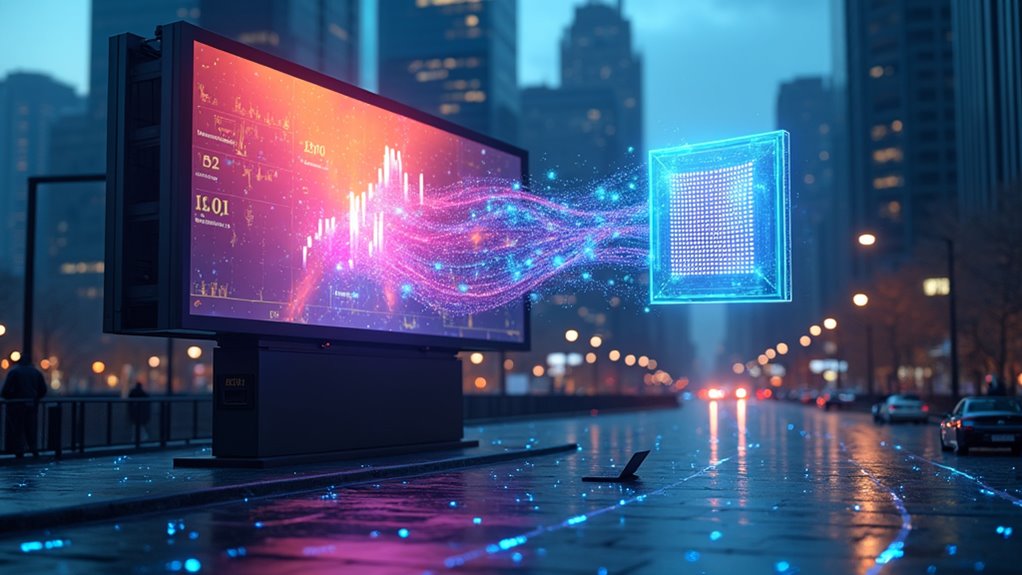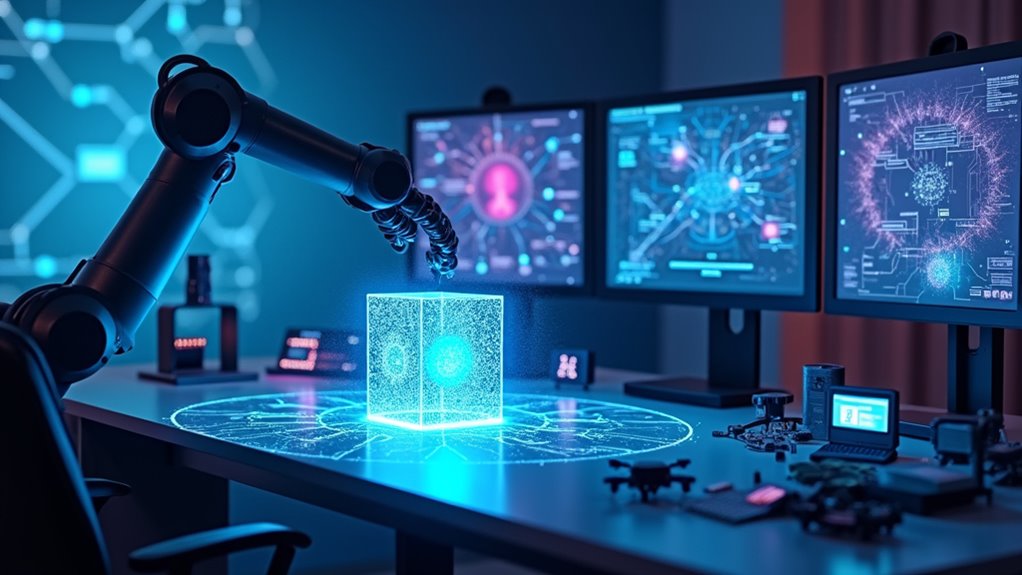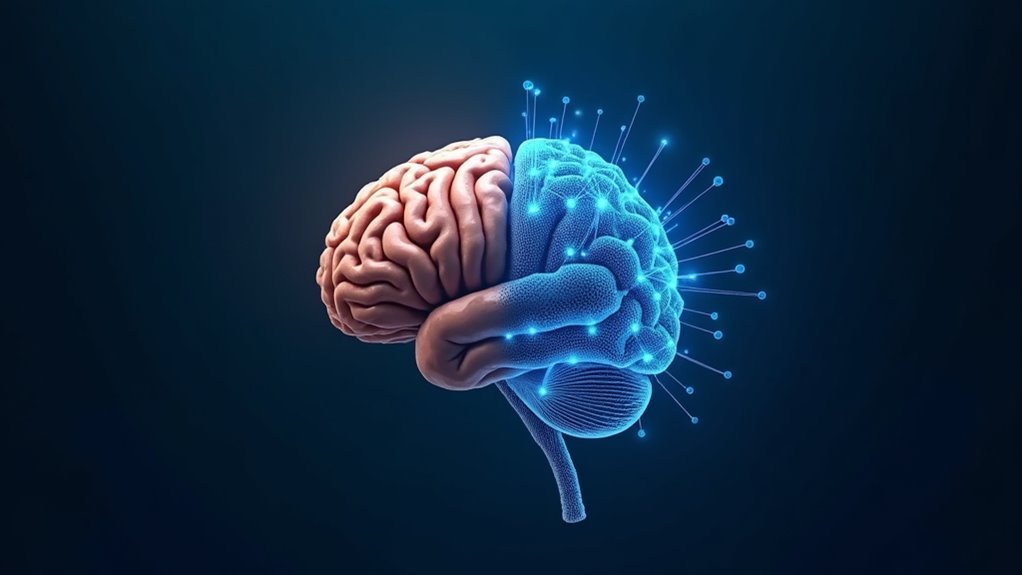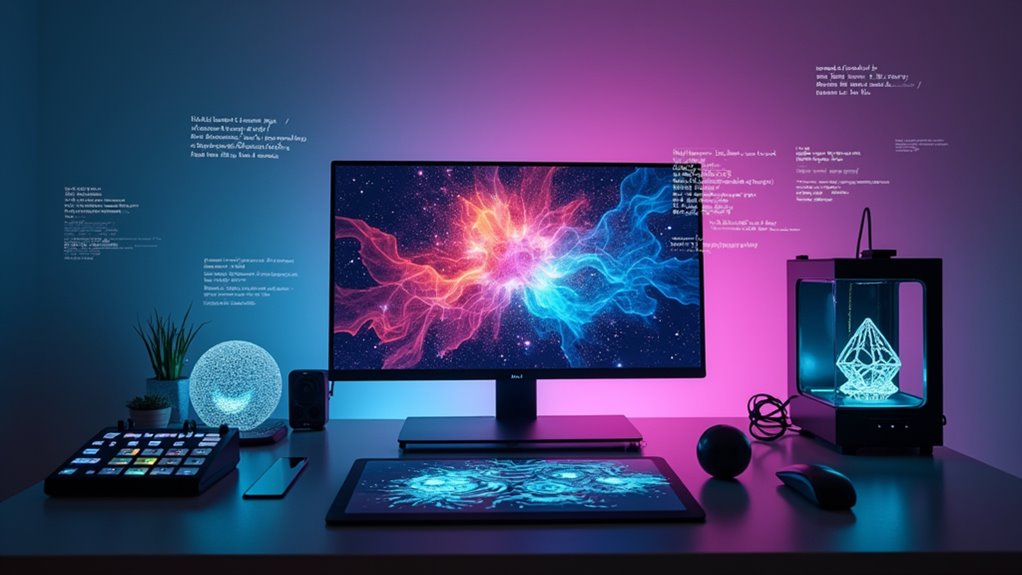AI is exploding, with the global market set to soar from $136.55 billion to a staggering $1.8 trillion by 2030. That’s a 37.3% annual growth rate, folks. North America leads investments now, but watch out for China—they’re coming for that AI crown. Beyond just tech, AI will pump $15.7 trillion into the global economy, transforming everything from healthcare to manufacturing. The job market’s shifting too, with Chief AI Officer roles tripling in five years. The numbers don’t lie.
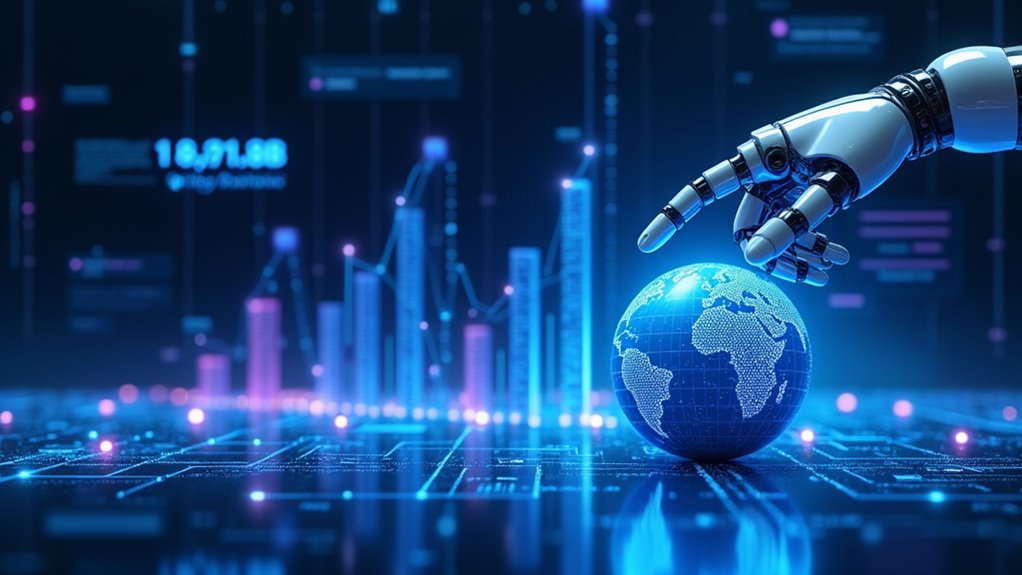
The juggernaut of artificial intelligence shows no signs of slowing down. The global AI market, valued at a hefty $136.55 billion in 2022, is barreling toward an astonishing $1,811.8 billion by 2030. That’s a 37.3% compound annual growth rate—the kind of number that makes investors sit up straight. AI investments are currently concentrated in North America, but don’t get too comfortable with that status quo. The landscape is shifting, and quickly.
By 2024, expect the AI software market to hit $98 billion. Think that’s impressive? It’s just the beginning. This market segment alone will reach nearly $400 billion by 2030. Meanwhile, the Asia-Pacific region—particularly China—is positioning itself to dominate, potentially claiming two-thirds of AI software revenue by 2030. Pay attention to this shift; it’s happening right under your nose.
Looking at the broader economic impact, AI won’t just change how we work—it’ll reshape entire economies. Projections suggest AI will contribute a staggering $15.7 trillion to the global economy by 2030. That’s not pocket change, folks. Generative AI alone is expected to create $434 billion in annual value for enterprises by 2030, with its applications transforming everything from marketing to financial services.
Industry adoption rates reveal AI’s pervasive influence. A whopping 94% of healthcare companies already use AI/ML in some capacity. Customer service? Over half of businesses are letting AI handle those interactions. This isn’t future tech; it’s present reality. Organizations implementing machine learning algorithms are seeing dramatic optimization in their manufacturing processes, cutting costs while increasing production efficiency.
The job market is responding accordingly. Nearly 8,000 AI job postings appeared in the U.S. in 2023 alone, with Data Engineer topping the list. Worried about AI stealing jobs? Don’t be. About 39% of organizations actually expect their workforce to grow thanks to generative AI technologies. The Chief AI Officer role has tripled in hiring prevalence over the past five years, highlighting the strategic importance businesses now place on artificial intelligence leadership.
Challenges remain, particularly around security and regulation. But one thing is clear: AI isn’t just growing—it’s exploding across markets, regions, and industries. Whether you’re investing, hiring, or simply trying to stay competitive, understanding these AI growth statistics isn’t optional—it’s essential.
Frequently Asked Questions
How Does AI Impact Job Security Across Different Industries?
AI impacts job security differently across industries, causing job displacement in predictable, routine-task sectors like manufacturing and customer service.
White-collar roles in finance and healthcare aren’t immune either. The technology demands skill evolution—workers must adapt or risk obsolescence.
Advanced economies face greater risks (60% of jobs) compared to low-income countries (26%).
While AI will create 97 million new jobs by 2025, that won’t offset the 300 million potentially lost.
Adapt or get left behind, folks.
What Ethical Concerns Arise From Rapid AI Advancement?
Rapid AI advancement raises several ethical red flags.
Bias mitigation remains challenging as algorithms often perpetuate societal prejudices—yes, your AI assistant might be just as biased as your uncle at Thanksgiving.
Privacy concerns loom large when systems collect vast amounts of personal data without clear consent.
The “black box” nature of many AI systems creates accountability problems, and deepfakes threaten truth itself.
Without proper guardrails, AI could exacerbate inequality while eroding transparency in vital decision-making processes.
How Can Small Businesses Affordably Implement AI Technologies?
Small businesses can adopt AI without breaking the bank. Start with subscription-based AI tools like ChatGPT or Canva, which offer powerful features at minimal cost.
Implementation strategies should focus on pre-trained models rather than custom solutions—why reinvent the wheel? Cost-effective solutions include cloud-based platforms that require no hardware investment.
For small business integration, prioritize areas with immediate ROI: customer service chatbots, inventory management, or social media scheduling.
Which Countries Are Leading in AI Regulation and Policies?
The EU, US, and China are the big three leading AI policy frameworks globally, each with distinctly different approaches.
The EU prioritizes human-centric AI with strict transparency requirements.
China? Centralized control all the way.
The US takes a more fragmented, state-by-state approach.
Meanwhile, countries like Singapore, Japan, and Canada aren’t just sitting on their hands—they’re developing their own robust Global AI initiatives that balance innovation with ethical guardrails.
South Korea and Switzerland? They’re coming up fast.
What Skills Will Humans Need to Remain Valuable Alongside AI?
Humans need to double down on what machines can’t replicate. Creativity enhancement isn’t just nice-to-have—it’s survival.
While AI crunches data, people who can innovate beyond algorithms will remain indispensable. Emotional intelligence, too, separates humans from silicon.
Understanding nuance, building trust, and maneuvering complex social dynamics? That’s our superpower. Critical thinking, adaptability, and ethical judgment round out the toolkit.


